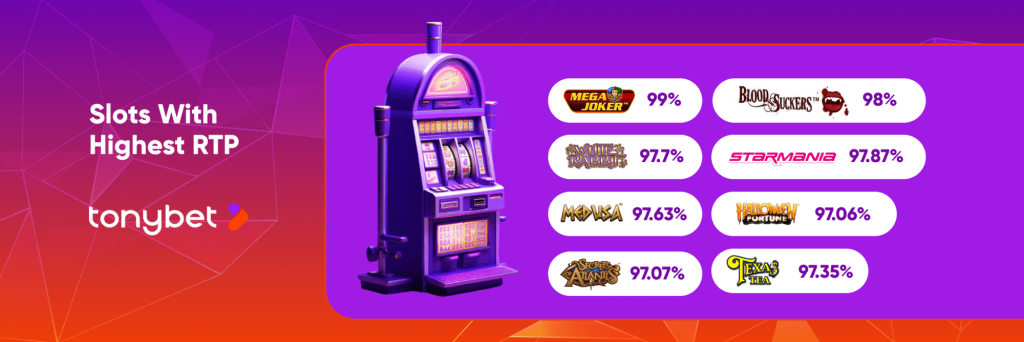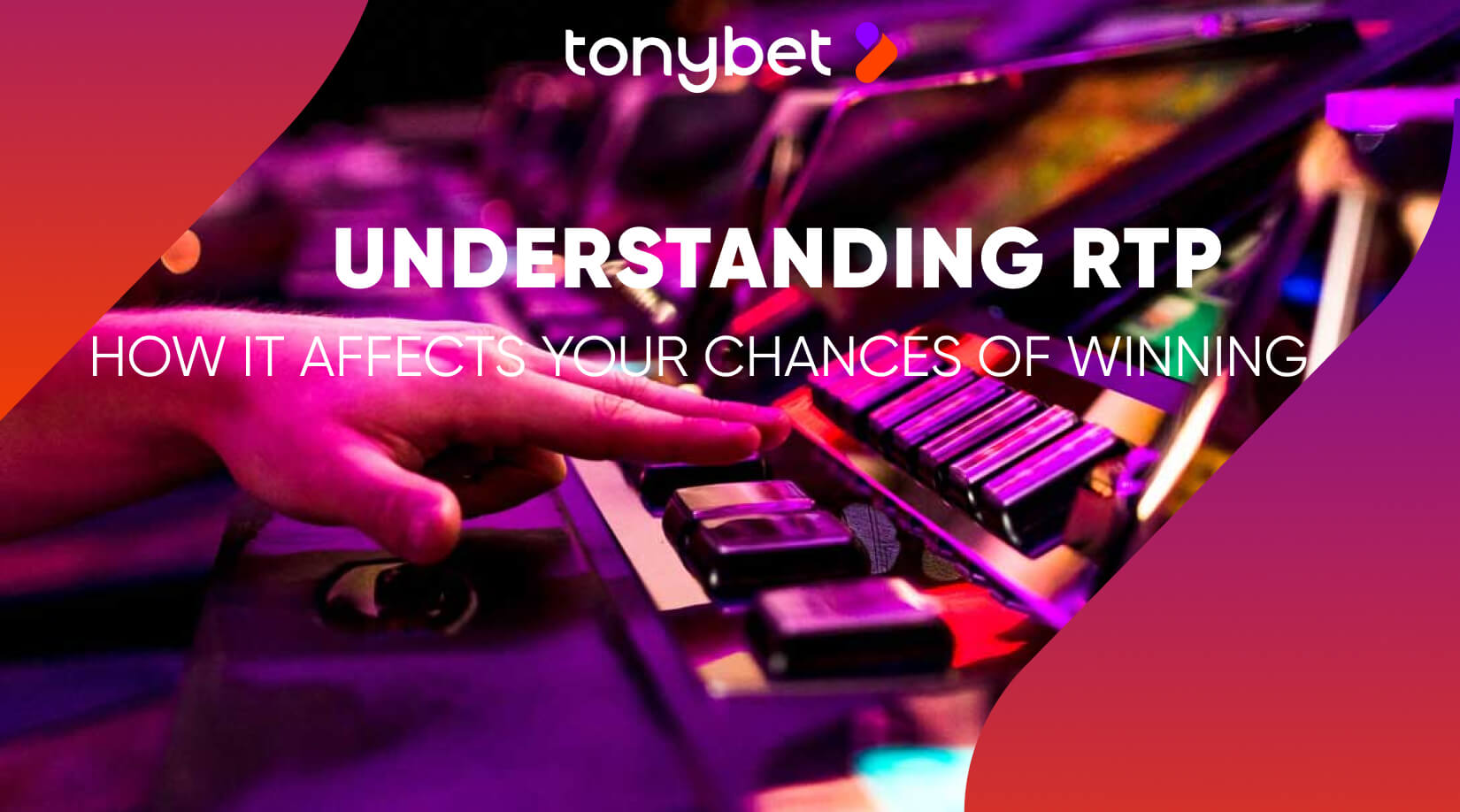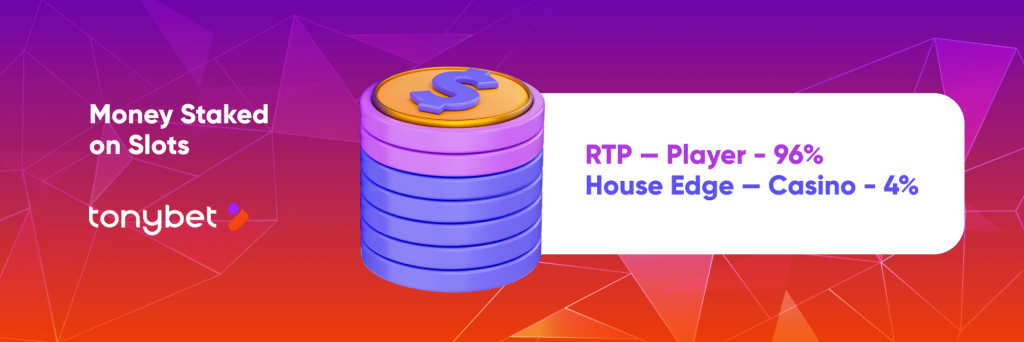Let’s dive into the fun and potentially profitable world of online gambling. There’s a key factor you need to know, called RTP or Return to Player, which can really shape your gaming experience.
Don’t worry if you’re still determining what RTP is or how it can boost your winning chances. This article is here to break down RTP for you. By understanding it, you’ll be able to pick your slot games wisely and increase your chances of success.
Casino RTP Explained
Curious about the meaning and definition of RTP in casinos? RTP, or “return to player,” means the fund percentage a slot game pays back to players over time and is the average ‘win’ for a player. Each casino game has a special return-to-player casino percentage, usually set by the game’s particular rules and the ways it works.
To understand how the RTP calculator works, we’d need to analyze many game outcomes over a long time, maybe even millions of rounds, to get the average win rate. That’s why the RTP you experience in a single game session differs greatly from the declared RTP.

What Does RTP Mean in Gambling
For example, if a slot game includes an RTP of 94%, its general meaning is that the game will give back 94% of the money played to the gamers while the casino takes 6%. So, if you play for a bit, you should get about 94% of your bets back.
Online slot games usually have an RTP of about 95%. Sounds good, right? It suggests players will win back a good bit of their money over time. But here’s the thing: RTP is more of a theory than a promise. Some players might have better or worse luck in the short run. So, even if a game has a 95% RTP, it doesn’t mean you’ll always get back 95% of your bet.
Remember that the theoretical RTP isn’t the only thing to consider when choosing a slot machine. You should also look at elements like game volatility, jackpot size, and how enjoyable the game is. These things can influence your odds of winning and the fun you have while playing.
Also, don’t forget the slot variance, which refers to the frequency and size of potential wins. High-variance slots might not have frequent wins, but when they do, they’re usually large. Meanwhile, low-variance slots might not have big jackpots, but they typically offer smaller wins more regularly. So, it’s all about picking what works best in your particular case.
How RTP Works
RTP’s working model might seem straightforward – just dividing the winnings by the total bets. But it’s more challenging than it sounds because the required data isn’t always available to everyone.
Casino slot machine designers run numerous simulations to compute the RTP. While this info might not be directly accessible to you, there are ways to locate a slot machine’s RTP.
Understanding how RTP for slot machines at a casino functions is crucial to understanding this concept. Slot machines work based on a Random Number Generator (RNG) system. Even though each spin is random, an average return to the player can be figured out over time. Remember, the set RTP won’t change, but the actual payout might vary from the advertised amount.
Also, how often you play can affect the payout. For instance, a game played 100,000 times could be around 3.47% off the average RTP.
As the number of games played goes up, the actual RTP will get nearer to the intended value. For example, a slot machine played 1,000,000 times will only be about 1% off the average.
Differences Between Theoretical and Actual Rtp (Return to Player)
RTP in casino games can either be theoretical or actual. Let’s understand these terms:
Theoretical RTP
This is the average amount a player can expect to win back from a casino game in the long run. It’s calculated using math and the game’s payout percentages. For instance, if a game’s theoretical RTP is 95%, it means that, on average, a player will get back $95 from every $100 they bet.
The theoretical RTP assumes that many people are playing the game for a long time. It’s not so much about short-term wins or losses for each person. Moreover, theoretical RTP doesn’t account for the ups and downs of an individual’s gaming session. Players could have hot or cold streaks that differ from the average expected outcome.
Actual RTP
This is what players really win back from a game. It can be different from the theoretical RTP because casino games are random and can be volatile in the short term.
You can see the difference between the actual and theoretical RTP in the short term, especially in high-risk games. Immediate wins or losses, luck, and players’ pragmatic decisions in the game can all affect this.
The Impact of RTP on Gaming Strategy
RTP makes it easy to pick games with solid odds. Choosing a game with the highest RTP percentage can improve your chances of winning at slots. That’s why savvy gamblers often choose games with an RTP of 95% or more.
Remember, though, just because a slot game has a high RTP doesn’t mean you’ll win every time. Each game and round can have different results, so you may need to spin repeatedly to hit that RTP percentage. Don’t forget there are other important factors to think about when playing high RTP slots.
High vs. Low RTP Games
High and low Return to Player (RTP) refers to casino games’ payout rates. It’s the share of all bets that the game will return to its users over time.
High RTP Games
- High payback: High RTP games pay back more of your bets, usually between 95% to 99% or more. So, the more you play, the more you get back.
- More wins: Games with high RTP have a smaller house advantage, increasing your chances of winning or at least losing less.
- Lasting funds: High RTP live games offer better returns, so your gaming budget tends to last longer, allowing you to play more.
- Consistent wins: Such games have lower variety in win amounts (low variance), so payouts are more regular but smaller.
Low RTP Games
- Big wins: Low RTP games offer less frequent but potentially more significant wins.
- High risk, high reward: These games have a high variance; wins could be big, but they won’t be frequent.
Lastly, the choice of high or low RTP games depends on you: how much you’re willing to risk, your budget, and what you enjoy most. Some players prefer potential big wins, while others choose to play longer with smaller, consistent returns.
Common Misconceptions About Slots RTP
Here’s a realistic way to look at RTP in slot games. Even though it may sound like a game with the highest RTP will give you wins right away, that’s not quite how it works. RTP is about long-term results, not instant winnings or single-session results.
Also, keep in mind that the RTP number comes from countless spins. So, having a slot game with an RTP of 98% doesn’t mean you won’t lose a couple of times before hitting a win streak. It’s all part of the surprise and excitement of playing slots.
Difference Between Rtp and Variance/Volatility
In the world of casino games, two key terms exist: Return to Player and Volatility (also known as variance).
RTP is basically the percentage of total bets a game will give back to the players over a long period. It’s like the average amount a player should expect to win over time. Keep in mind, though, that this doesn’t guarantee immediate returns – it’s simply a gauge to consider for long-term gaming.
On the other hand, volatility describes the risk level or the pattern of payouts in a casino game. It tells us how much the wins can change in the short term. If a game has high volatility, it might not give wins very often but can result in a big prize. Games with low volatility, however, offer frequent, smaller wins.
Player’s choice often depends on their risk tolerance – some might enjoy high-volatility games for the thrill and possibility of significant wins, whereas others might prefer low-volatility games for their steady, more expected outcomes.
What is RTP in Casino Games
Figuring out the return rates for casino games might be a bit tricky. Games such as blackjack, roulette, poker, baccarat, video poker, and craps have return rates that can change based on the player’s bets or blackjack strategy.
For games like blackjack that require skill, beginners might lower their own return rates with poor decisions. Here’s a casino RTP list of the biggest return percentages for casino games:
- Online Slot Games: 93% – 99%
- Classic Blackjack: 99.40%
- American Roulette: 94.74%
- European Roulette: 97.30%
Plus, there’s a significant difference between American and European roulette. American roulette has an extra pocket and a double zero bet option. These two facts drop the return rate to 94.74%, compared to European Roulette‘s 97.30%.

Comparative Analysis of RTP in Online vs. Brick-And-Mortar Casinos
Online slot games give you better returns than those in brick-and-mortar casinos. This is due to the lower costs of running online casino websites. As online slots are cheaper to maintain, with fewer expenses like ongoing game fees or operator payments, they can offer many various games. Unlike physical casinos that need space for each slot machine and have extra costs for setting up and maintaining them, online casinos can host hundreds or even thousands of slots for you to choose from.
The Role of RTP in Responsible Gambling
RTP (Return to Player) can be a handy tool for players when gauging risks. You can pick games that match your comfort with risk and the kind of gaming style you prefer – steady, regular wins or the thrill of infrequent, big prizes.
RTP not only helps in risk management but also ensures fairness in the casino industry. Trustworthy online casinos in Canada and game creators clearly share the RTP percentage, so players have the facts they need to make smart choices and play responsibly. This openness helps build trust between the casino and players, giving a sense of safety and dependability when gambling.
Tips for Players on Using RTP Information Wisely
Here are some tips on how to smartly use RTP when playing casino games:
- Know the basics. RTP tells you the average amount a game will pay back to players over time. It doesn’t predict immediate results or specific play sessions.
- Seek high RTP games. Games with high RTP percentages usually offer better returns and less advantage to the house. 95% RTP or more is a good measurement for more long-term success.
- Think about game variance. Consider if a game has high variance with big wins but longer losing streaks, or low variance with smaller but more frequent wins. Choose based on what risk level you’re comfortable with and your budgeting strategy.
- Try before betting. Test games for free before betting real money. This is a no-risk way to learn about game features and potential winnings to see if you like its volatility and if it suits your playing style.
Industry Perspective on RTP Insights
Casinos know that players like games with high return-to-player (RTP) rates because they have better odds of winning. Advertising these games can bring in more players.
However, casinos also need to make money. Higher RTP games can mean bigger payouts for players, which could affect the casino’s earnings. So, casinos have to find the right balance between offering high RTP games and staying profitable.
Regulatory Aspects of RTP in Different Jurisdictions
The rules for Return to Player vary depending on where you are:
- In the UK, the Gambling Commission keeps an eye on RTP as part of its role in regulating gambling.
- Malta’s Gaming Authority (MGA) handles gaming regulation on the island.
- In Sweden, the Swedish Gambling Authority ensures that online casinos meet their specific RTP rules.
- Gibraltar’s Gambling Commission regulates gambling and includes RTP accuracy in its standards.
- The Gambling Supervision Commission regulates gaming activities on the Isle of Man.
Conclusion
Wrapping up on RTPs, remember that getting this idea can spice up your casino fun. While RTP doesn’t secure wins, it shows the broader picture of slot machine odds. Whether you’re playing just for kicks or aiming for victory, understanding the RTP puts you in the know. It’s your ticket to a smarter and more exhilarating casino experience.






